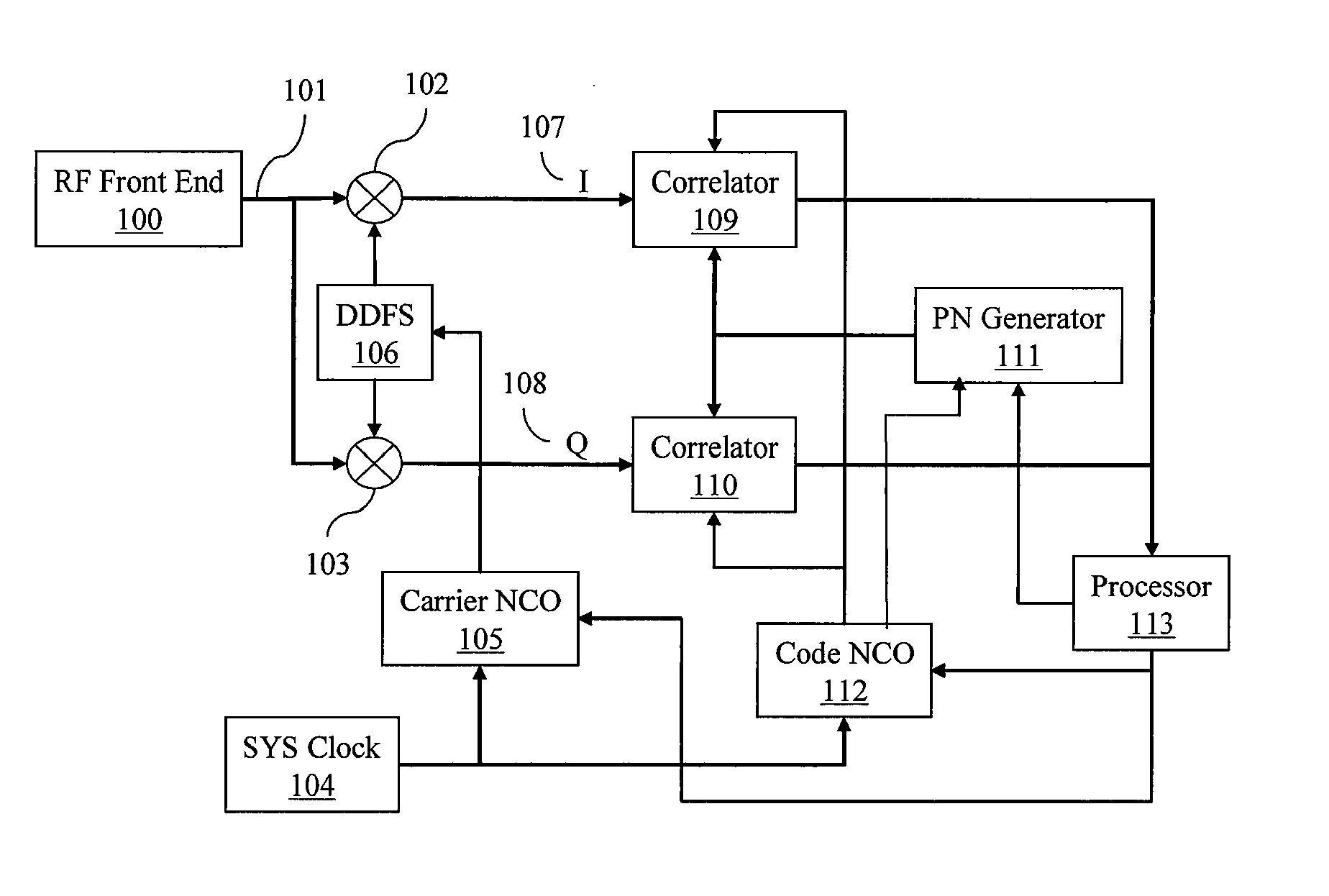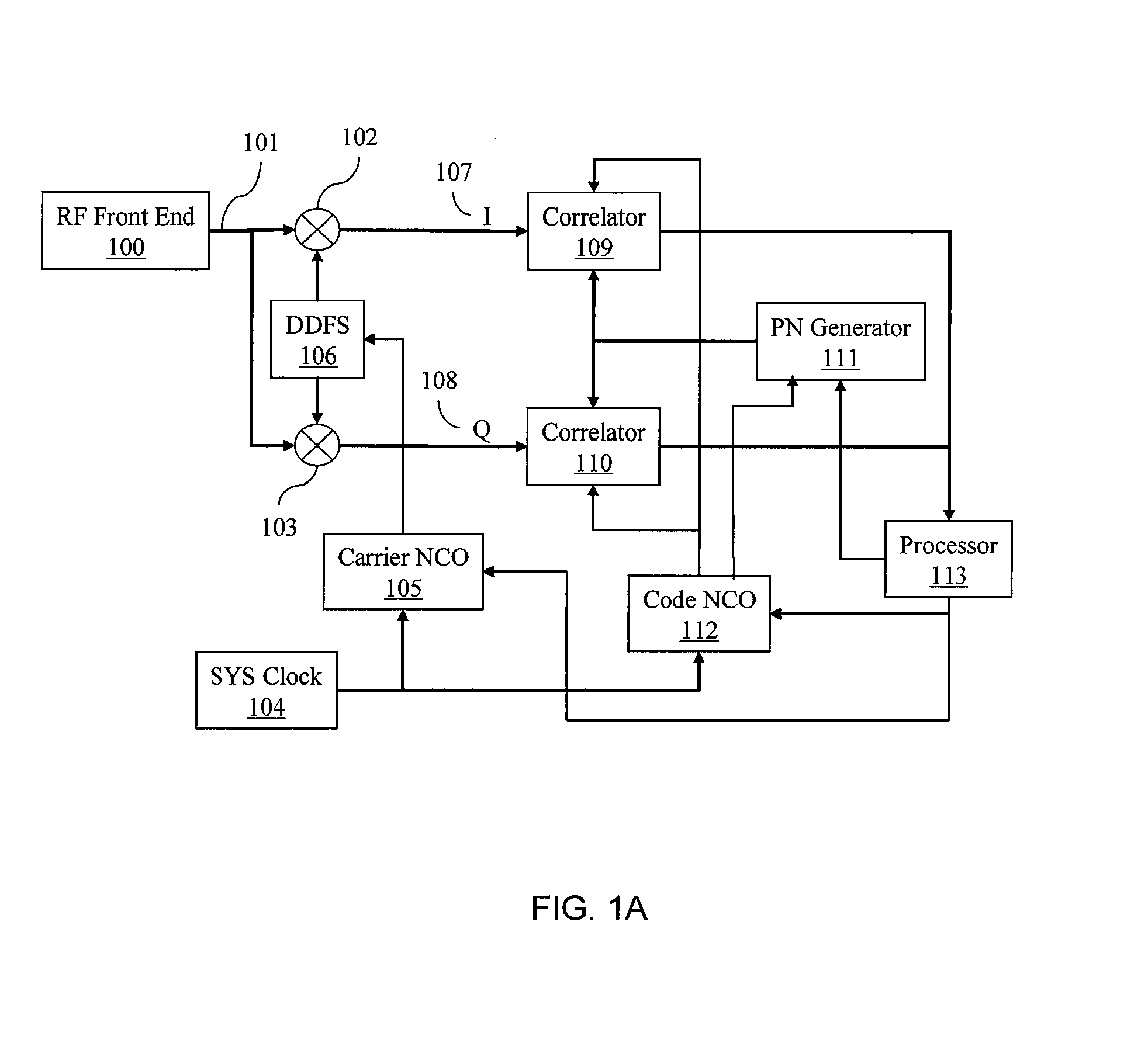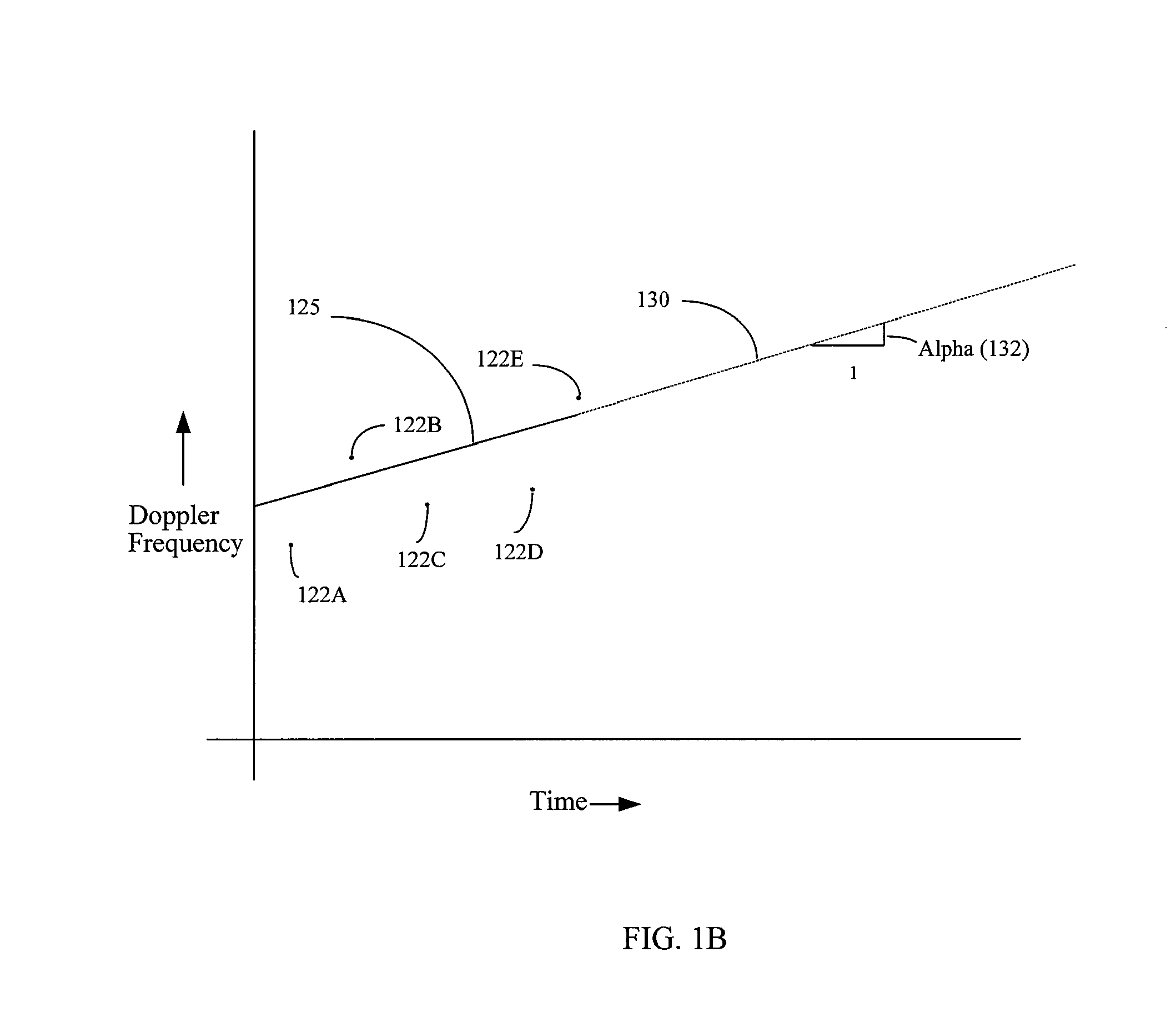Methods and systems for acquisition, reacquisition and tracking of weak navigational signals
a navigation signal and weak technology, applied in the field of satellite-based navigational receivers, can solve the problems of ineffective integration, ineffective integration result, and inability to coherently integrate squaring loss, so as to improve the sensitivity of the receiver
- Summary
- Abstract
- Description
- Claims
- Application Information
AI Technical Summary
Benefits of technology
Problems solved by technology
Method used
Image
Examples
Embodiment Construction
[0025]FIG. 1A is a functional block diagram of a GPS receiver according to an embodiment of the present invention. An RF front-end 100 processes the RF signal received at the antenna (not shown). Operations of a conversional RF front-end 100 include amplification, down-conversion, and analog-to digital conversion. The RF front end 100 outputs an intermediate frequency (IF) signal 101 to a baseband section of the receiver from its analog-to-digital converter (ADC) output (not shown). The RF front-end 100 down converts the received RF into the intermediate frequency (IF) for baseband processing. The IF signal 101 is made available to two paths, one in-phase (I) and the other in-quadrature (Q). In the I path, the IF signal 101 is multiplied in IF mixer 102 in-phase with a local frequency signal generated by a direct digital frequency synthesizer (DDFS) 106 to produce the in-phase (I) component 107. In the Q path, the same signal 101 is multiplied by the DDFS frequency in-quadrature (i....
PUM
 Login to View More
Login to View More Abstract
Description
Claims
Application Information
 Login to View More
Login to View More - R&D
- Intellectual Property
- Life Sciences
- Materials
- Tech Scout
- Unparalleled Data Quality
- Higher Quality Content
- 60% Fewer Hallucinations
Browse by: Latest US Patents, China's latest patents, Technical Efficacy Thesaurus, Application Domain, Technology Topic, Popular Technical Reports.
© 2025 PatSnap. All rights reserved.Legal|Privacy policy|Modern Slavery Act Transparency Statement|Sitemap|About US| Contact US: help@patsnap.com



